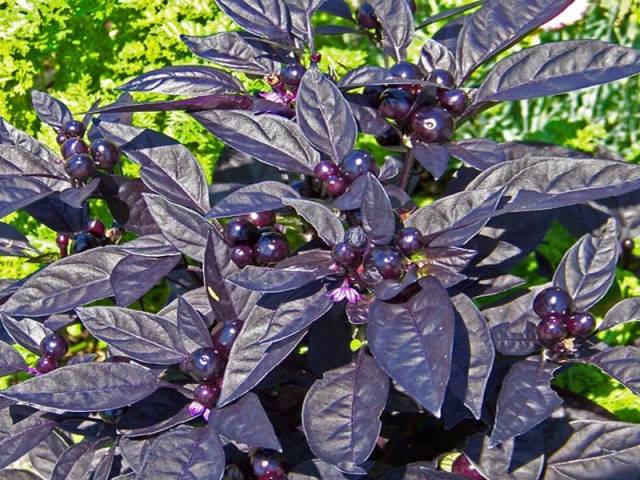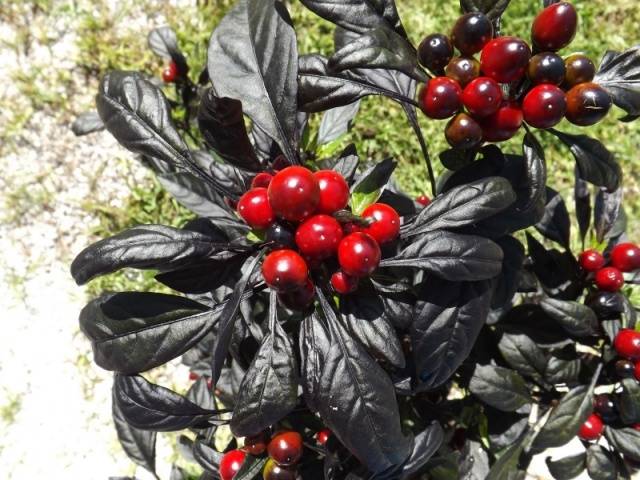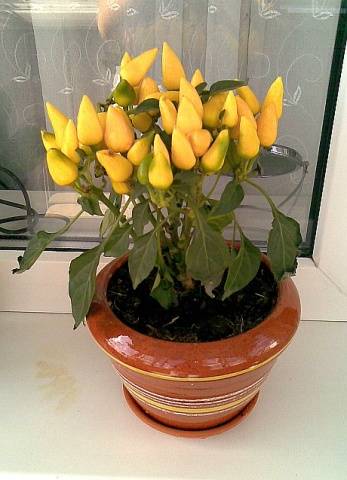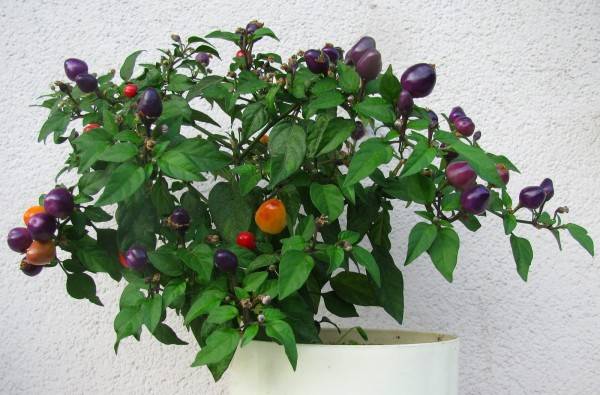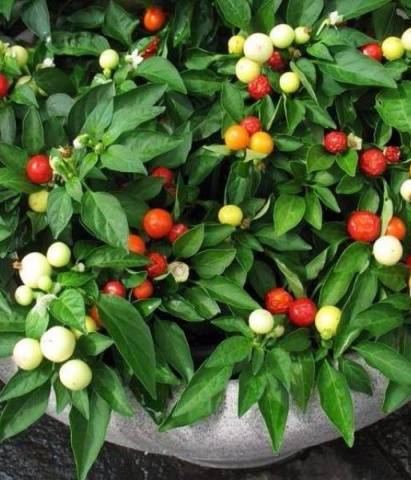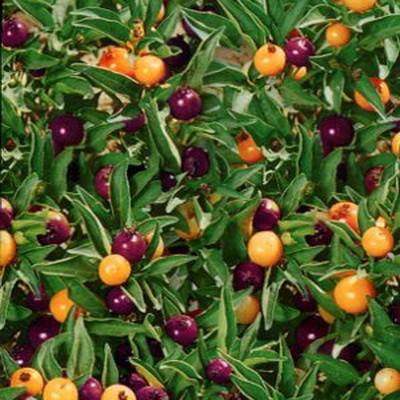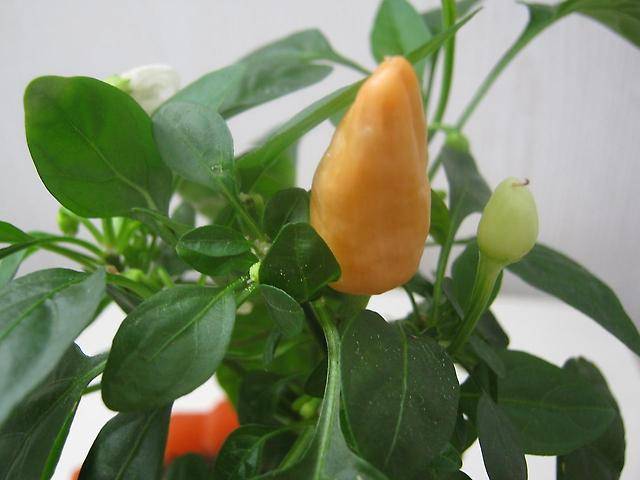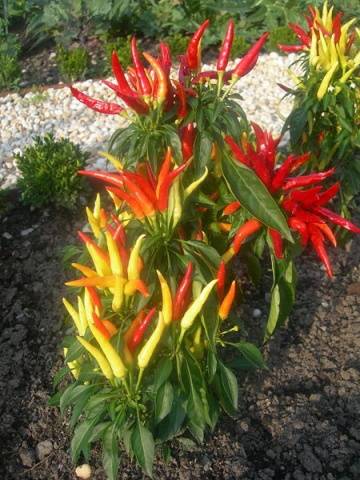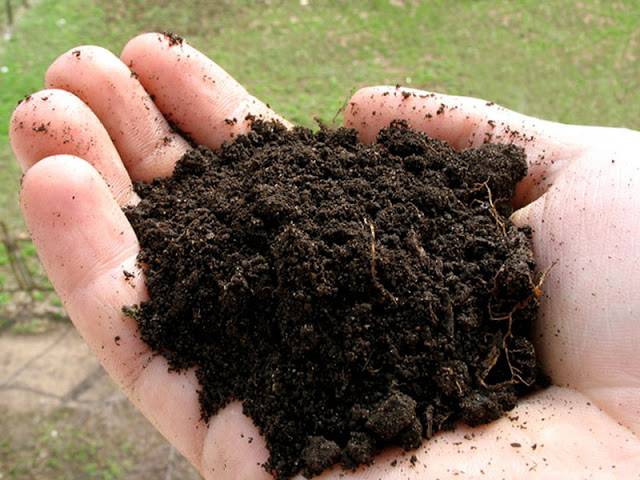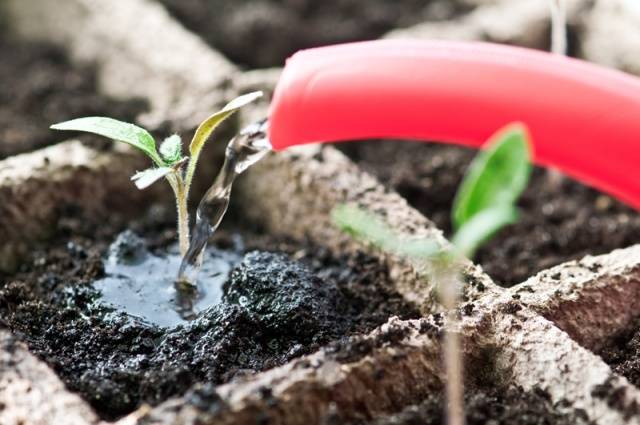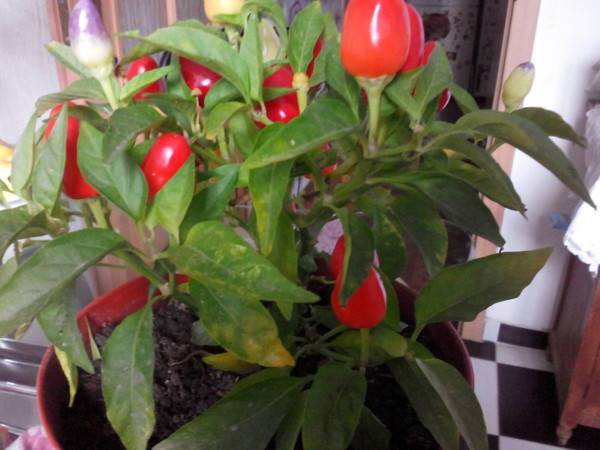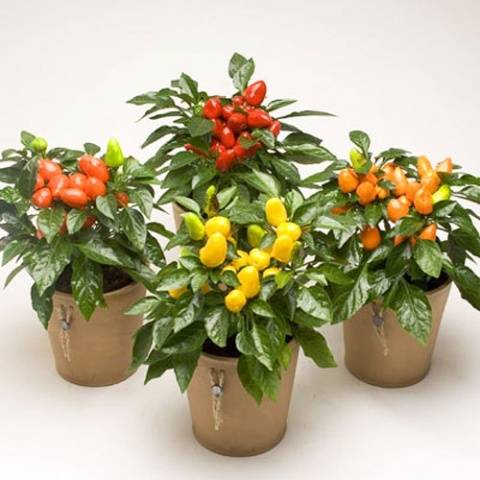Content
Growing garden crops on the windowsills of apartments is becoming very popular today. Increasingly, on the windows of apartment buildings you can see tomatoes, cucumbers, zucchini, eggplants, and peppers growing in pots. Flowers, previously considered exclusively garden flowers, can also be seen today in the home interior. These are, for example, chrysanthemums and tulips.
Breeders, trying to meet demand, breed dwarf plant varieties that can fit in a narrow window sill space and are less demanding on lighting than their garden counterparts.
The disadvantage of almost all garden crops at home is that you cannot collect a large harvest from them. There is little space. The exception is the varieties of hot pepper, which bear quite a lot of fruits on one bush, but are used in very small quantities.
Most often now these varieties are called decorative for their really beautiful look.
Today, decorative varietal peppers can be of a wide variety of colors, from purple to red. It also happens that some varieties have colored not only fruits, but also leaves.
For example, pepper varieties "Black Pearl" has deep purple leaves. At the same time, before the fruits ripen, the leaves of this variety are usually green, while the peppers themselves are almost black. When ripe, the peppers turn red and the foliage purple.
1
Because of their peculiar, very decorative appearance, dwarf pepper varieties are often referred to as decorative ones. Unfortunately, inedible varieties can be found in this category. However, the information here is different. Perhaps the saying “no medicine, no poisons, there is a dose” applies to these varieties of peppers.
The general principle applies to pepper; the smaller the pepper, the sharper it is. It may very well be that the characteristic "inedible" stems from the too high pungency of a particular type of pepper.
Goldfinger is most often mentioned as inedible, but in some places you can find the statement that this variety is also edible.
The Filius blue variety is also in doubt.
Many varieties indoor peppers were originally bred as decorative, without concern for their edibility. When choosing a “dual-use” variety of homemade peppers, it would be better to pay attention to the dwarf varieties originally bred for use in cooking. It is unlikely that there are many who want to test the statement about the dose on their own body.
The positive aspects of growing hot pepper in an apartment also include its ability to disinfect the room in which it is located and scare off aphids and whiteflies.
The principles of growing ornamental and garden peppers are the same. Many gardeners simply dig up a couple of dwarf bushes in the fall and transplant them into pots. It is for this reason that the division varieties of hot peppers the decorative and dining room is rather arbitrary.
Such varieties as "Meduza", "Ryabinushka", "Salute", "Ogonyok", "Inflorescence", being dining rooms, can simultaneously serve as a decoration for a room. The varieties are perennial.These varieties will become annuals in harsh conditions, where they may not withstand the winter, but not in a warm apartment. Having grown a tree once, it will be possible to admire it for five years. Another advantage of the varieties is that they are of domestic selection, have been known for a long time and were bred as canteens. Therefore, you do not have to worry about their edibility.
Even without fruit, thanks to its small white flowers, the tree has a very elegant decorative appearance. The flowers are self-pollinating and do not need pollinating insects.
Pepper varieties for growing on the windowsill
Indian summer variety
Shade-tolerant variety of bitter pepper. Early ripe. The bush looks very decorative with fruits of different colors depending on the stage of ripening. The variety is recommended not only for the garden, but also for growing in pots on the windowsill or on the balcony in summer. The shape of the fruit can also vary from spherical to proboscis. Leaves up to seven centimeters in size. Evergreen bush, very branched, up to forty centimeters high.
Seeds for seedlings are sown in late February - early March. They are transplanted into a permanent pot or open bed at the end of May. When planted in open ground, the bushes are planted at a distance of thirty centimeters from each other. The variety is distinguished by extended fruiting. Harvested from July to October. It is used for canning and as a seasoning for dishes.
Ryabinushka variety
Medium early undersized variety. Branched bush. The peppers are round, very hot. The trees scattered one by one in the foliage give the plant a very decorative look. The color of the fruit is purple or orange. The diameter of the peppers is two to two and a half centimeters, weighing from three to five grams. This variety is not only decorative, but also edible. It is used in cooking, preservation and in the alcoholic beverage industry.
Salute variety
Mid-season variety, suitable for growing in an open bed, in a greenhouse, on a balcony, in a pot on a window. The height of the bush is only twenty centimeters. The plant is branched, does not need the formation of a crown, ornamental. The crop can be harvested four months after sowing the seeds.
Fruits are cone-shaped, collected in bunches. They can have a smooth or ribbed surface. You can pick them both dark green and light orange. Fruit weight is six grams.
If this variety is planned for planting in open ground, then seeds for seedlings are sown at the end of February. The crop is removed in July.
Medusa F1 variety
A very original and new hybrid variety. Bushes up to forty centimeters high are covered with rather long, up to seven centimeters, peppers, growing bunches and giving the impression of jellyfish tentacles. The bush does not need to be formed. The crop is uncomfortable, so fruits of different colors are present on the bush. Harvested from July to September.
The variety is excellent for growing in an apartment and on a balcony. Grows well in the garden in the beds. It is used in cooking and conservation. Peppers can be dried for long-term storage.
The disadvantage of this variety is that it is a first generation hybrid. There is no point in getting seeds from him.
The Queen of Spades
The variety looks extremely decorative and grows well in a lack of lighting. The height of the bush is up to thirty centimeters. The plant is spherical, medium-leafy. The variety is mid-season. Cone-shaped fruits stick out upward. The color of the fruit gives additional decorative effect to the pepper: purple at the stage of technical ripeness and red at a mature state. The variety bears fruit from July to October.
Agricultural technology in the apartment
To grow hot peppers on a windowsill, you first need a fertile soil. It is often a mixture of humus, compost, leafy soil, peat and sand. A variant of soil from a mixture of peat with humus is possible.
If you don't feel like messing around, you can buy a ready-made mixture for peppers, eggplants and tomatoes.
Seeds are sown on nutritious soil and slightly sprinkled with sifted earth on top, with a layer of one centimeter. Points of view on exactly how to sow hot peppers differ.
Some sow seeds in a common container and later select the strongest plants. The possibility of such a selection is an advantage of this method. This method is also convenient in that before the emergence of shoots, you can cover the entire box with foil. However, a cassette with seedling cups will be no worse.
Others believe that it is better to immediately sow the seeds in separate pots, since the pepper does not tolerate the pick poorly. When growing seedlings in this way, young plants are transplanted into a larger pot using the transfer method.
The optimal planting time for pepper is from the last days of February and all the first ten days in March. After sowing, the seedlings are covered with foil or glass and removed to a warm place until shoots appear.
The first shoots appear in two weeks. At the stage of the third - fourth leaf, the seedlings are planted in permanent pots with a volume of one and a half liter. Indoor pepper does not require large pots. After the sprout reaches a height of twenty centimeters, the top must be pinched. This stimulates the branching of the tree.
Due to the abundant fruiting and the small volume of the earthen coma in the pot, it is necessary to regularly feed the plants with mullein and bird droppings. The solutions of these fertilizers should be weak.
Pepper also needs regular loosening of the soil and watering.
After the next harvest, the pepper tree is rejuvenated. In the case of peppers, this does not happen in the same way as with other garden plants (vigorous pruning of branches in order to awaken dormant buds), but by transplanting the plant into a pot with fresh fertile soil.
Starting growing pepper in indoor conditions, amateurs often make mistakes, because of which the tree can get sick or die.
The most common mistakes when growing hot peppers in a room
Excess watering
As in a heat-loving culture, the roots of pepper can rot if it is watered with cold water or if an earthen coma is excessively moistened. At the same time, it is also impossible to leave the soil completely dry. Pour over the pepper with settled water at room temperature.
In apartments, central heating radiators are often located under the windowsills. Because of them, the soil in the pots standing on the windows dries out very quickly. If the pepper is close to the radiator, it should be watered more frequently. It is necessary to watch according to the situation, but it may be necessary to water it once every two days. Under normal conditions, indoor peppers are watered twice a week.
Pinching the central root
Many people advise pinching the central root of a young plant when picking seedlings. This is akin to the advice to cut off the bird's wings so that it does not fly.
Peppers are very painful to tolerate this procedure. The plant will survive, but it will be sick for a long time. May refuse to bloom.
Insect pests
It happens that aphids or spider mites are trying to attack the pepper. They can appear, being carried by the wind through the window. Often, owners of hot peppers are frightened of this phenomenon and throw away the plants. In fact, you can destroy pests with the help of the pepper itself, which is a strong repeller for these insects. It is enough to grind the seeds and internal veins and fill them with warm water for a day. Then add grated soap and spray the plants three times.
Spider mites can be prevented by maintaining high humidity. To do this, it is enough to regularly spray the plants or place a container of water next to the pots.If the tick has already appeared, has managed to multiply and the situation is difficult, you can use insecticides on a biological basis. For example, fitoverm.
Leaves fall
This phenomenon is typical just for those peppers that are transferred in the fall from open ground or a greenhouse to a pot on a windowsill. The tree, accustomed to the abundance of sunlight, begins to shed its leaves, complaining of a lack of light. If there is no desire to install additional lighting and harvest in February, the pepper can be cut off.
Cut off the shoots by a third. Watering at this time is also reduced, but the earthen lump is kept in a slightly moist state.
Harvest twice a year
Lovers of indoor bitter peppers, observing their growth, found a way to harvest the first crop in May.
For this hot pepper seeds are sown for seedlings in the fall, creating unfavorable conditions for it so that it does not have time to bloom on New Year's Eve (the western version is just "Christmas pepper") and does not deplete its strength in the shortest days. After December 21, the plants are transferred to the maximum sunlit window: south or east.
The pepper will bloom quickly and by the end of May it will be possible to get up to a dozen fruits, uncharacteristically large for a particular variety, from it. After harvesting, the tree quickly throws out new shoots and blooms a second time. By the end of September, a second crop can be harvested.
After that, you can not throw out the pepper, but leave it for the winter. In January, cut off old shoots, transplant the plant into fresh substrate and place the pot on the south or east window. The pepper will give the third crop.
There are a lot of varieties of decorative bitter peppers that can be grown in the apartment and on the balconies. So much so that the eyes run up. Moreover, all varieties are universal in terms of the place of cultivation. Ornamental pepper varieties are suitable for windowsill, for balcony, for open ground (in the southern regions), for greenhouses.
